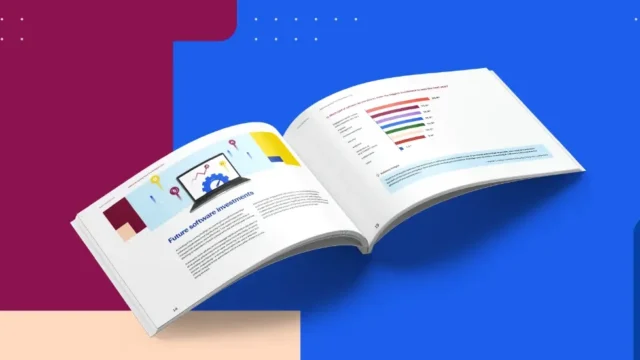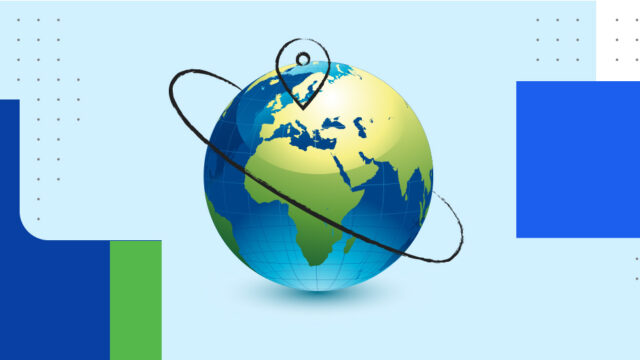
Strategies for Dealing With Difficult Clients
Learn how to leverage tech solutions to deal with problematic clients.
One business challenge that frequently arises, no matter the industry, is dealing with difficult clients. These customers can significantly impact company operations, profitability and employee morale while requiring considerable attention and resources.
For instance, an accounting firm might have a client who constantly changes their requirements, or questions every detail of a financial report. This consumes time and disrupts workflow, leading to employee stress. However, it also presents opportunities for growth and improvement. One key aspect of this is improving client retention.
Moreover, serving difficult clients effectively requires you to use technology solutions to identify customer needs quickly and accurately. With the help of a digital workflow, you’re better able to address challenges and get results everyone can feel good about.

Clear communication and active listening
The importance of establishing channels for communication and feedback cannot be overstated. Communication platforms connect businesses with clients, helping them understand their needs and address concerns. Empathy, underpinned by active listening, is a valuable tool in this.
Active listening can help identify the root cause of dissatisfaction, enabling a firm to address it more effectively. Moreover, it encourages openness and honesty and can lead to successful outcomes. A client who feels heard is more likely to trust and remain loyal to a business.
However, traditional methods of communication may not be sufficient. This is where technology solutions come into play:
- A client collaboration app can significantly enhance the communication process. It enables firms and teams to securely communicate with clients and manage requests smoothly.
- Cloud software offers another avenue for improving client communication. This allows for more transparent and efficient communication while managing expectations and reducing misunderstandings.
In conjunction with strong communication and active listening, these tools can help businesses manage clients more effectively.
Setting boundaries and managing expectations
Let’s say you’ve just signed a lucrative contract with a new client. They’re impressed with your financial sense, but they also carry a reputation for being somewhat problematic. Their requests can be borderline absurd, their deadlines are unreasonably tight and their communication patterns are inconsistent at best.
Sound familiar? You’re one of many business owners or managers who deal with this.
From the outset, it’s crucial to set clear boundaries. But that’s not all — you must also manage expectations, as over-promising and under-delivering can be detrimental. You want to aim for transparency and realism so everyone is on board and in the know.
For example:
- If a client’s request isn’t possible within their desired timeframe or budget, say so up front
- If a project isn’t on time or is off-track, communicate that early on and often
- If expectations are too high, explain why with as much detail as you can
Mutually agreed-upon terms are the foundation of any successful project. These terms prevent misunderstandings, keep everyone on the same page and cultivate trust and respect.
Technology can also be a powerful ally. Project management tools are excellent for tracking progress, milestones and deliverables. They visually represent where a project stands and what still needs to be done. This transparency helps manage expectations effectively and keeps everyone accountable.
Offering alternative solutions
Challenging clients often know what they want and want it yesterday. But what if it’s not realistic or is unnecessary? Here’s where offering alternative solutions comes into play. By proposing different options, you demonstrate you’re fully invested in their success.
So, how do you brainstorm these creative alternatives? Start by understanding the client’s needs. What are their end goals? Why is their current request not the best route?
Once you’ve got a bit more clarity, you can start exploring other possibilities. For instance, data analysis software can provide valuable insights that help shape your proposals. By leveraging data, you can make more informed decisions and suggest solutions based on hard facts.
Dealing with conflict and diffusing tension
Conflict and tension can be major roadblocks to productivity and success, whether you’re dealing with a difficult client or departments within an organization. However, with the right strategies, businesses can manage conflict effectively, diffuse tension and foster a more pleasant working environment.
With clients, the key is to:
- Always remain professional and calm
- Don’t take it personally — a client’s frustration is a reflection of their own stress
- Listen, empathize and work with them to find solutions that not only make business sense but make sense to them
As for supporting harmony within your own organization, give cross-departmental collaboration a try. Regular inter-departmental meetings, team-building activities and open communication channels can all help build a stronger team. Collaboration can break down silos, improve understanding and reduce conflict. Likewise, collaborative platforms are also proving to be invaluable tools.
These platforms allow for threaded conversations and contextualized discussions, making addressing conflicts easy. A prime example is OnPoint DAS, an end-to-end, fully integrated app. Such a tool can be instrumental in managing both external and internal conflicts by facilitating effective communication and collaboration.
Providing additional support and resources
Imagine you’re a client who’s just invested a significant amount of time and money into a new business partnership. You’re hopeful but also a little apprehensive. What if that business partner offered you additional support and resources to ensure your investment pays off? That would feel pretty good. This value-add turns a one-time client into a loyal, long-term partnership.
Clients need personalized insights for their needs and goals. And this is where technology can be your best friend. A sophisticated technology platform offers advanced insights that go beyond surface-level data.
One such tool is intuitive client advisory software. This is a powerful digital partner that helps deliver insights to boost your client’s decision-making and satisfaction. It’s like having a personal advisor available at any time, giving advice on what’s best for you and your company. What’s better than a direct answer to your personal question?
Prioritizing employee well-being
Prioritizing employee well-being is a moral obligation and a business imperative. Many employees experience job stress due to factors such as workload, work-life balance and job security. An American Psychological Association survey found 64 percent of U.S. adults identified work as a major source of their stress.
The world of accounting is no exception, and the high stakes and high pressure make burnout a very real risk. Causes of burnout in finance professionals include heavy workloads, executive pressures and dealing with difficult clients.
To help your employees prevent burnout and work within a healthier environment, consider the following strategies:
- Equip and train your employees to have the skills to handle difficult clients professionally and effectively
- Encourage employees to set boundaries and manage expectations with clients
- Consider implementing workload balancing measures, such as rotational assignments or additional support during peak periods
- Recognize and reward employees to boost morale, motivation and job satisfaction
- Create an environment where employees can share their experiences, learn and advise each other
Additionally, employee collaboration platforms enable knowledge-sharing, peer support and access to resources. This helps each employee and team feel connected, comfortable and confident in the game plan.
Knowing when to part ways
Sometimes parting ways with a client is what’s best for your practice. So, how do you decide when to end it?
Here are some factors to consider:
- Does this relationship bring in a substantial amount of money, or is it draining your resources? If you find that a client is costing you more than they’re worth, reconsider the relationship. Could your services be better used elsewhere?
- Is this client monopolizing your time and attention at the expense of other clients?
- Is this client causing undue stress for you or your team? If one particular client is consistently causing high levels of stress, it may be time to reassess the relationship and cut your losses.
Data analysis tools like Caseware Sherlock can also help you objectively assess a client’s performance and make an informed decision based on large amounts of customer engagement data. With the ability to track customer engagement in real-time, you get valuable, tangible insights into customer behavior. You can identify whether a particular client is worth the headache and energy, or if you need to move on.
Customer relationships must be nurtured and managed with empathy, collaboration, support and modern technology tools. So, take time to build your strategies, gather the right tools and information and understand the customer’s journey and needs.








